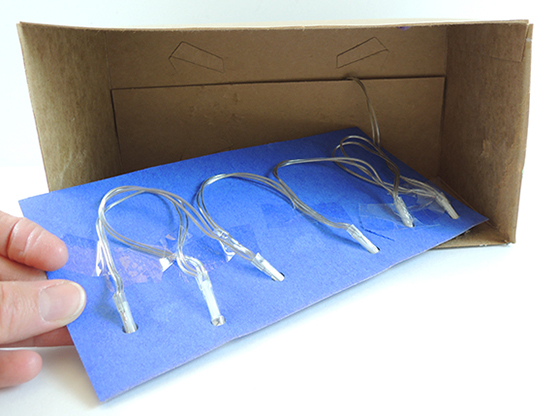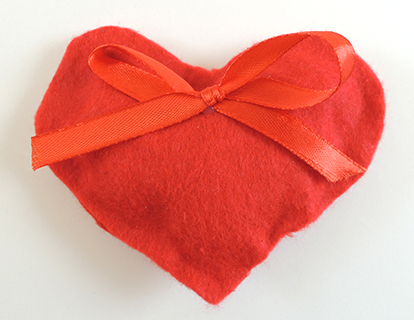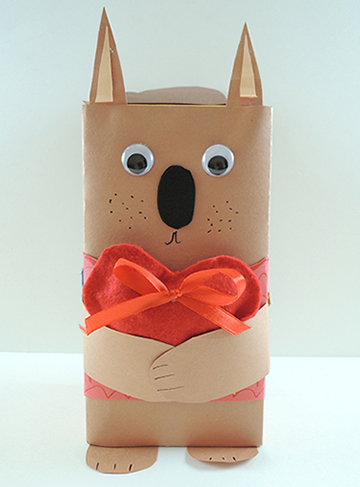
Take a nighttime stroll in your local neighborhood and…who knows? You might notice something you’ve never seen before! Light projects are always a hit at our story times, and this sweet story was the perfect companion to the craft.
We read Night Walk, written by Sara O’Leary and illustrated by Ellie Arscott (Groundwood Books, 2020). When a young child can’t sleep, their Dad invites them on a night walk through the neighborhood. From warm lights in windows to late suppers, the world can be a different place, even when you’re close to home.
You’ll need:
- 1 large box (ours was 4.5” X 4.5” x 9” but a large tissue box works too!)
- 1 small strand of LED string lights
- Dark blue poster board
- Construction paper and tagboard
- Scissors, tape, and glue for construction
- Markers for decorating
- Hole punch
This project is a simple diorama with silhouettes of buildings cut out of tagboard. Kids used hole punches to add windows to the buildings and “stars” to the sky:

To light the box, we used strands of mini LED lights scored from a holiday discount bin. First, punch holes in a rectangle of dark blue poster board, then push a light bulb through each hole. Use tape to secure the wires to the back of the poster board to prevent the light bulbs from wiggling loose.
 In the above photo, you can also see how the end of the light strand is threaded through the back of the box. It leads to the strand’s battery pack, which we taped to the back of the box to make it extra sturdy:
In the above photo, you can also see how the end of the light strand is threaded through the back of the box. It leads to the strand’s battery pack, which we taped to the back of the box to make it extra sturdy:

Complete this portion of the project by taping the night sky to the back of the box. Now add your tagboard skyline, then decorate your buildings with markers, construction paper, or whatever else is available. We also recommend adding cardboard trees, shrubs, sidewalk, whatever strikes your fancy!
 When the projects were complete, we lined up all the boxes, turned out the lights, and everyone took a walk to enjoy and observe the little worlds we created!
When the projects were complete, we lined up all the boxes, turned out the lights, and everyone took a walk to enjoy and observe the little worlds we created!


 Spring might just be around the corner, but there’s still time to bust out a cozy, super snazzy sweater. Especially if you’re a squirrel with a celebration to get to!
Spring might just be around the corner, but there’s still time to bust out a cozy, super snazzy sweater. Especially if you’re a squirrel with a celebration to get to! To make the squirrel’s sweater extra dynamic, we offered a variety of colorful fabric squares for texture. We also attached wiggle eyes and a self-adhesive foam nose, but those are just as easy to draw on with markers.
To make the squirrel’s sweater extra dynamic, we offered a variety of colorful fabric squares for texture. We also attached wiggle eyes and a self-adhesive foam nose, but those are just as easy to draw on with markers. The heart pillow slides right into squirrel’s arms for a sweet hug, just like the story! Aww!
The heart pillow slides right into squirrel’s arms for a sweet hug, just like the story! Aww!

 Our unicorn is the stick horse we designed for this
Our unicorn is the stick horse we designed for this 
